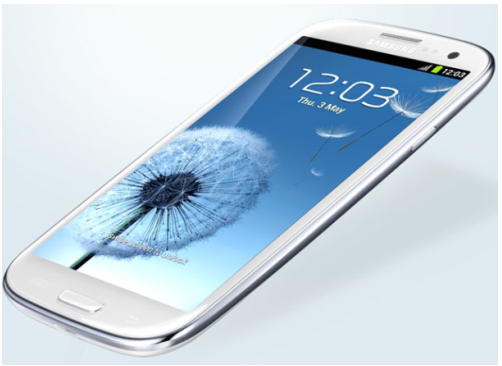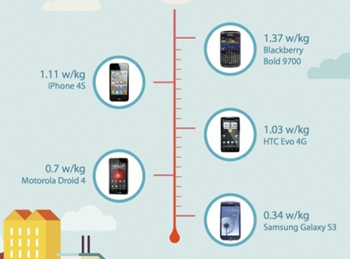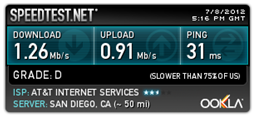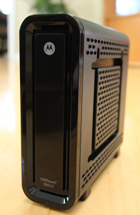What is the Best Smartphone You Can Buy Today?
July 20, 2012 1 Comment

One of these is the best smartphone available today. Which one is it? [Phone sizes adjusted so they appear uniform]
Since this article was first written, an updated version has been posted here. Check it out. A lot has changed.
Evaluating the Hardware
Who makes the world’s best smartphone? Most people would probably say the iPhone 4S, since it seems like everyone has one. But is it really the best? Let’s find out. I started by making a chart of the specs for all currently available smartphones from U.S. carriers.
The Top Five Finalists
Next, I narrowed down the list of candidates to the best five phones based on hardware specs. I was surprised that some of the most popular phones did not not make this list. I’ll discuss this more below, but first, the top five finalists based on hardware specs are:
|
|
HTC Evo 4G LTE |
HTC One X |
LG Nitro HD |
Motorola ATRIX HD |
Samsung Galaxy S III (U.S.) |
|
Processor |
1.5 GHz dual-core |
1.5 GHz dual-core |
1.5 GHz dual-core |
1.5 GHz dual-core |
1.5 GHz dual-core |
|
RAM |
1GB |
1GB |
1GB |
1GB |
2GB |
|
Storage |
16GB |
16GB |
20GB |
16GB |
16 or 32GB |
|
Screen size |
4.7” |
4.7” |
4.5” |
4.5” |
4.8” |
|
Resolution |
1280×720 |
1280×720 |
1280×720 |
1280×720 |
1280×720 |
|
Pixel density |
312ppi |
312 ppi |
329 ppi |
326 ppi |
306 ppi |
|
Rear cam |
8MP |
8MP |
8MP |
8MP |
8MP |
|
Front cam |
1.3MP |
1.3MP |
1.3MP |
1.3MP |
1.9MP |
|
Network |
LTE |
LTE |
LTE |
LTE |
LTE |
|
5GHz WiFi |
No |
No |
No |
No |
Yes |
|
Bluetooth |
4.0 |
4.0 |
3.0 |
4.0 |
4.0 |
|
NFC |
Yes |
Yes |
No |
No |
Yes |
|
Thickness |
8.9mm |
8.9mm |
10.4mm |
8.4mm |
7.6mm |
|
Weight |
134g |
129g |
127g |
140g |
133g |
|
Battery |
2000 mAh |
1800 mAh |
1830 mAh |
1780 mAh |
2100 mAh |
|
OS |
Android 4.0.3 |
Android 4.0.3 |
Android 2.3.5 |
Android 4.0.4 |
Android 4.0.4 |
|
Carrier |
Sprint |
AT&T |
AT&T |
AT&T |
All |

There are big differences between the above phones in terms of screen size and thickness [Chart: Phone Arena]
Creating the above list was not easy because there are phones like the Samsung Galaxy Note, HTC Rezound, Samsung Galaxy Nexus, HTC One S and Motorola Droid Razr Maxx which excel in some areas, but lag in others. However, in the end all of those were dropped because the above phones were better overall.
And the Winner is…
As you can see from the chart above, when it comes to specs, the Samsung Galaxy SIII beats or ties the best smartphones in all areas except pixel density and weight. Even in those areas, it’s no slouch. Most reviewers would probably give second place to the HTC One X, but the LG Nitro HD wins in both lightness and pixel density. The HTC Evo 4G LTE and Motorola ATRIX HD are also very good phones.
Smartphones That Didn’t Make the Cut
There is a fairly long list of smartphones which are good, but don’t deserve to be on the “best” list because they are flawed in one or more areas. You can view these in the chart below.
Click on the chart below to make it larger and more readable.
Red-faced text shows areas where these phones under-performed. Blue-faced text indicates areas where some phones did well.
Why the iPhone 4S is No Longer One of the Best
Some of you are probably wondering why the iPhone 4S is no longer listed in the chart of best smartphones. The answer is easy; The iPhone 4S hasn’t been competitive for a long time when it comes to hardware specs. In fact the iPhone 4S no longer beats the best Android phones in any of the benchmarks or specifications listed in this article. If you’re a hard-core Apple fan, you’ll probably buy an iPhone 4S anyway — just don’t say you weren’t warned. Two years is a long time to own an under-performing 3G phone that doesn’t support 4G LTE. I’m not saying the iPhone is a bad phone — it’s not, but I was surprised to find that Android phones now outperform it in almost every way. For example:
There is hope for Apple however. An iPhone 5 is rumored to be coming this fall. After it is released, I’ll update this chart and see how it compares to the other smartphones available at that time.
The One Benchmark the iPhone 4S Excels At
It is surprising that the world’s most popular phone gets beat in every single spec listed above. This didn’t used to be the case. It used to be the other way around with iPhone dominating smartphone specs. There is still one thing that the iPhone 4S can beat Android phones at: cellphone radiation. The iPhone 4S has over 300% more radiation than the Samsung Galaxy SIII. That’s very surprising because the Samsung Galaxy SIII has more radios and is capable of much higher data speeds than the iPhone 4S. If you own an iPhone 4S, you might want to get a Bluetooth earpiece if you don’t have one already.
If you think I missed a phone that should be considered here, please let me know.
– Rick
P.S. Some of you are probably thinking this article relates to only hardware — not software. You’re right. Read this to see how Android compares to the newest version of iOS.
Copyright 2012 Rick Schwartz. All rights reserved. Linking to this article is encouraged.
Follow me on Twitter @mostlytech1















